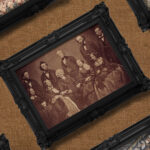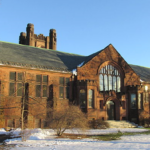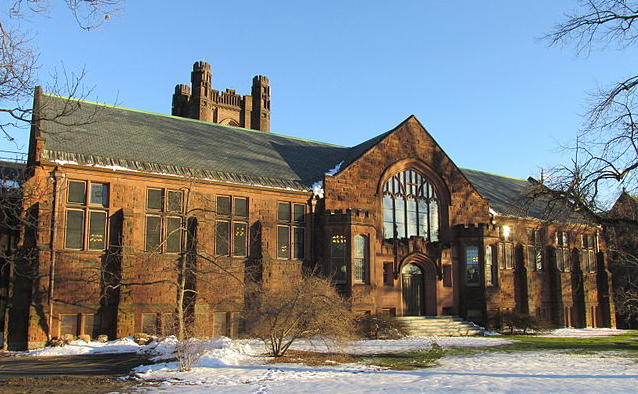This guest post is from Shawn Varghese. Varghese earned a PhD from the University of Texas at Dallas, and a ThM from Dallas Theological Seminary.
The year 2024 commemorates the centennial of the founding of Dallas Theological Seminary. Founders including Lewis Sperry Chafer envisioned a school that would preserve an orthodox view of Scripture and Christian doctrine, within DTS’s distinct commitment to dispensational theology. Through its initial five decades, the seminary welcomed students from around the globe who aspired to study the Scriptures. Notably absent from this diverse cohort, however, were black Americans.
Even as Chinese, Indian, and even African students enrolled in classes with a dominant white student body, black Americans were prohibited. Racial segregation, which was pervasive in the South through the 1960s, had prevented black pastors from enrolling at the school. But the persistent interest from black applicants prompted some seminary supporters to found the Dallas Colored Bible Institute (later Southern Bible Institute).
As the civil rights movement made headway across the country in the 1950s and ’60s, DTS administrators began grappling with admitting black students. By 1951, the school had been officially open to black students but cited no applicants. By the 1960s, the school had received applications from black students, but the applicants were deemed unqualified and recommended to the Southern Bible Institute. Only by the 1970s did a few black students attend DTS.
Why did black students enroll for theological education at a seminary that once excluded their presence? From my research on the first generation of black students at DTS, the answer is complicated.
Tony Evans was among the first black students to attend Dallas Seminary. Widely recognized today as the pastor of Oak Cliff Bible Fellowship in Dallas, Texas, and the voice on the Urban Alternative (an affiliated radio broadcast ministry), Evans described his experience at the seminary as “welcoming.” Teachers even allowed him to pursue the question of race “without fear of unwarranted opposition.” According to Evans, his own temperament and appreciation for theological education at DTS had “muted” the racial problems he could have encountered had he been more vocal about it. Similarly, Pastor Eddie B. Lane (1939-2015) enrolled for classes before Evans in 1969 and described his time on campus as “the greatest years of my training.”
This is not to say that there were no hostilities on campus. Evans described some professors as visibly uncomfortable with black students on campus. One professor pastored a segregated church, whose deacons let black students know that they “were not to come there.” Evans described the Bible churches of this time as “pretty segregated.” Evans also recounted the times he faced discrimination from white students who had not been around black students on an equal setting before. When addressing perceptions of the national civil rights movement on campus, Evans thought that some students saw the civil rights activists’ work as “not in keeping with how Christians should act.”
Evans was not alone in recalling the unease with black students on campus. Eddie Lane also recalled professors not being too excited to have him there. Many students mirrored this attitude. “In my classrooms,” he once recalled, “there were times when nobody would sit next to me, in front of me, behind me. . . . I could have a table all by myself even if the room was crowded.”
One factor motivating black DTS students to continue their education was the support of specific faculty and administrators. People like Evans, Lane, and other black students repeatedly named figures such as Howard Hendricks and Haddon Robinson among the most stalwart champions of black students on campus. They described them as “very warm” and “welcoming” and encouraging them not to quit when facing hostility.
Another theme that motivated black students to seek training at DTS was their theological conviction. According to Evans, black students sought the type of biblical and theological education the seminary offered. At a time when evangelical debates over biblical inerrancy were at an all-time high, conservative black students appreciated the seminary’s resolute commitment to the doctrine.
Another student, Willie O. Peterson, echoes this point. For Peterson, black students went to DTS because of its commitment to scriptural infallibility despite the racist attitudes of some professors and students. When confronted with racism on campus, Peterson claimed, “Lane and I prayed . . . our way through the hard days of intentionally becoming evangelical when the people who embraced us were the liberals who denied the word of God [and] the people who were hostile to us were the people we wanted to be with because they had the word of God.”
Peterson highlighted a conundrum facing many black Americans seeking seminary education during segregation. According to Daniel Bare, the commitment to biblical inerrancy ran across the color line even as many black Americans labeled themselves as “fundamentalists.” Peterson described the dilemma facing black conservative Protestants: “We wanted to be well-trained in the Scriptures and our liberal friends were not offering us that opportunity, but our white segregationist friends were.”
The decision to enroll in conservative white institutions had an effect on black communities. Recalling the resentment of some black Americans, Peterson said, “Those of us who made the choice to study with the white evangelicals understood that we were going to be viewed as unwise by our other [black] brothers who chose to study at the more liberal schools. They might have gotten a more superior education to us but they did not walk away with the depth of scripture knowledge and grasp and the sophistication of how to use it that we did.”
In the end, black students enrolled for classes at the historically white school primarily due to their perception that the school was committed to biblical inerrancy. Despite the history of prohibiting black students and the campus hostility from white students, staff, and faculty, these individuals sought to obtain an education that would help them study the Scriptures in preparation for effective ministry. Further, select faculty and administrators worked with black students to create a more inclusive campus environment. For these reasons, some of the first black students, including Evans, have remained associated with the seminary years after completing their studies.
Today, as faculty, administrators, students, alumni and others invested in the DTS community celebrate the centennial, it is imperative to acknowledge the contributions of these pioneering black students. Their presence and perseverance have enriched the DTS community and contributed to its ongoing evolution into an institution more fully manifesting the “all tribes and peoples and languages” ethos in God’s kingdom.
Book links are part of the Amazon Associates program.

















